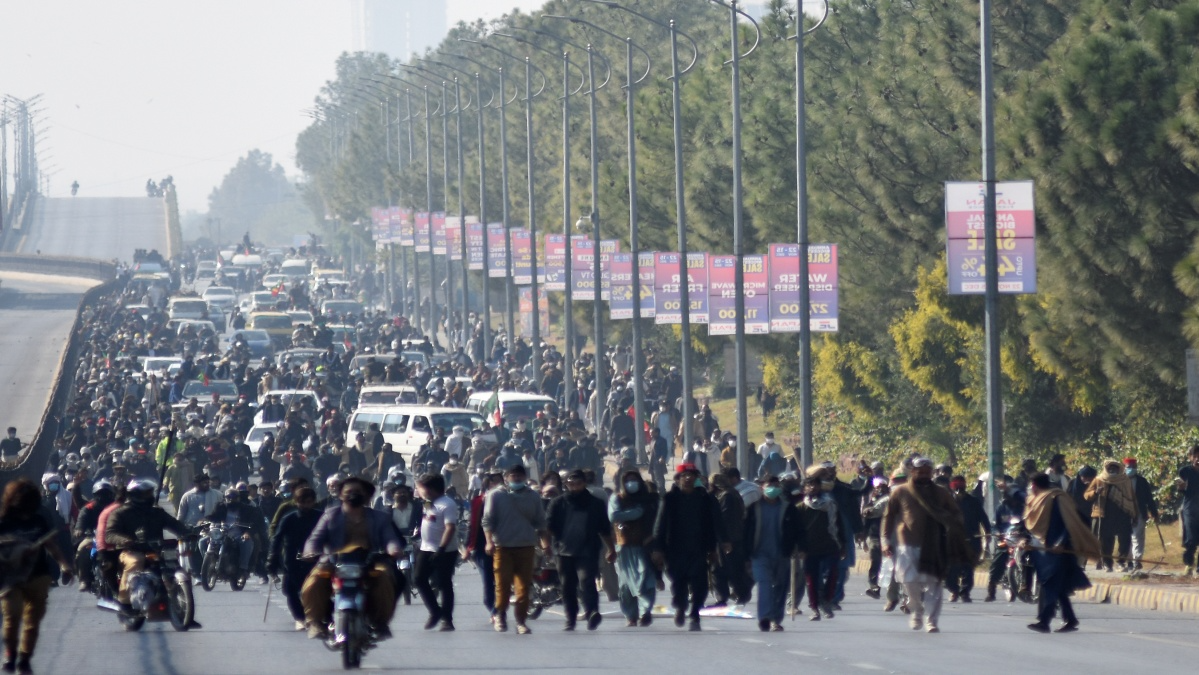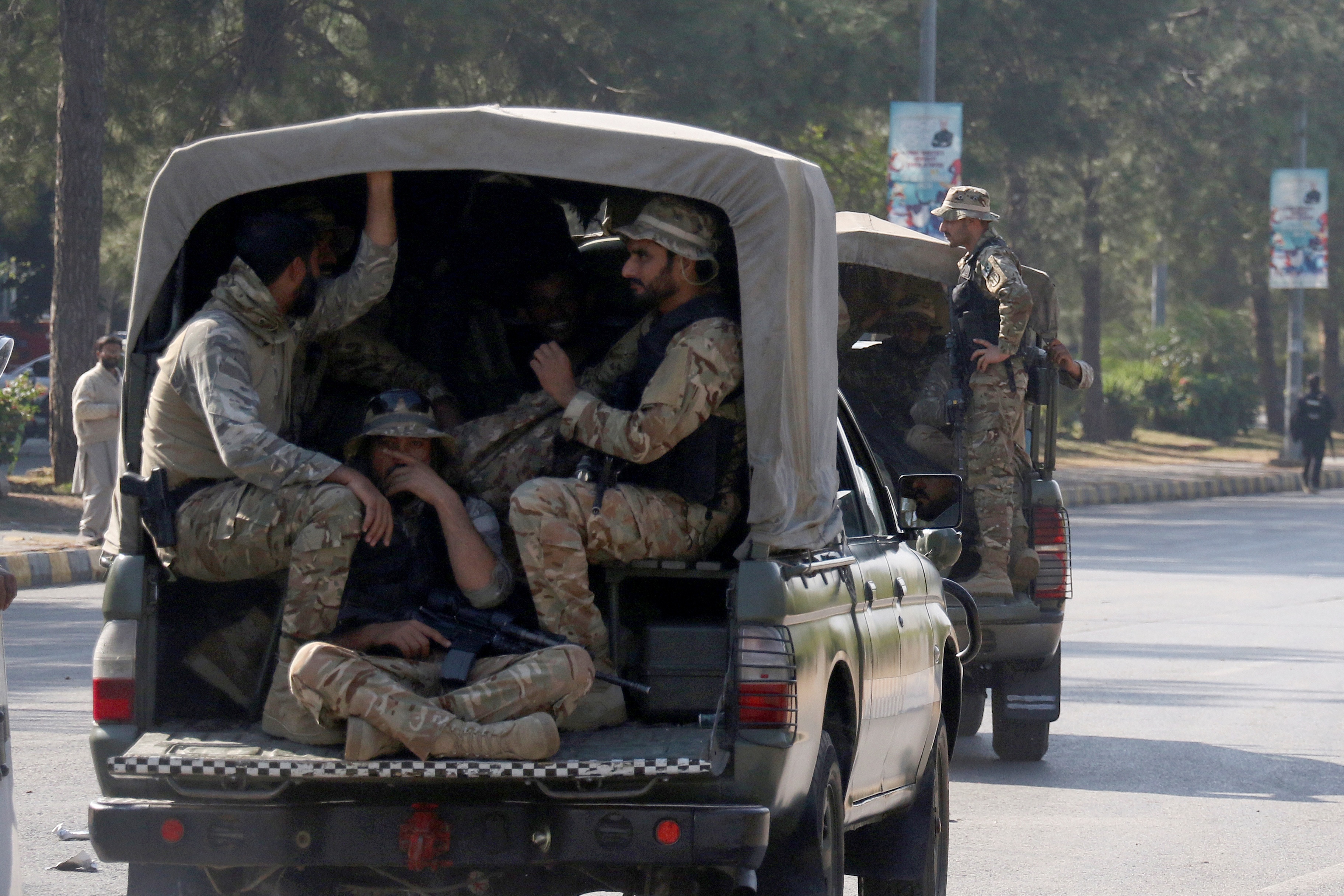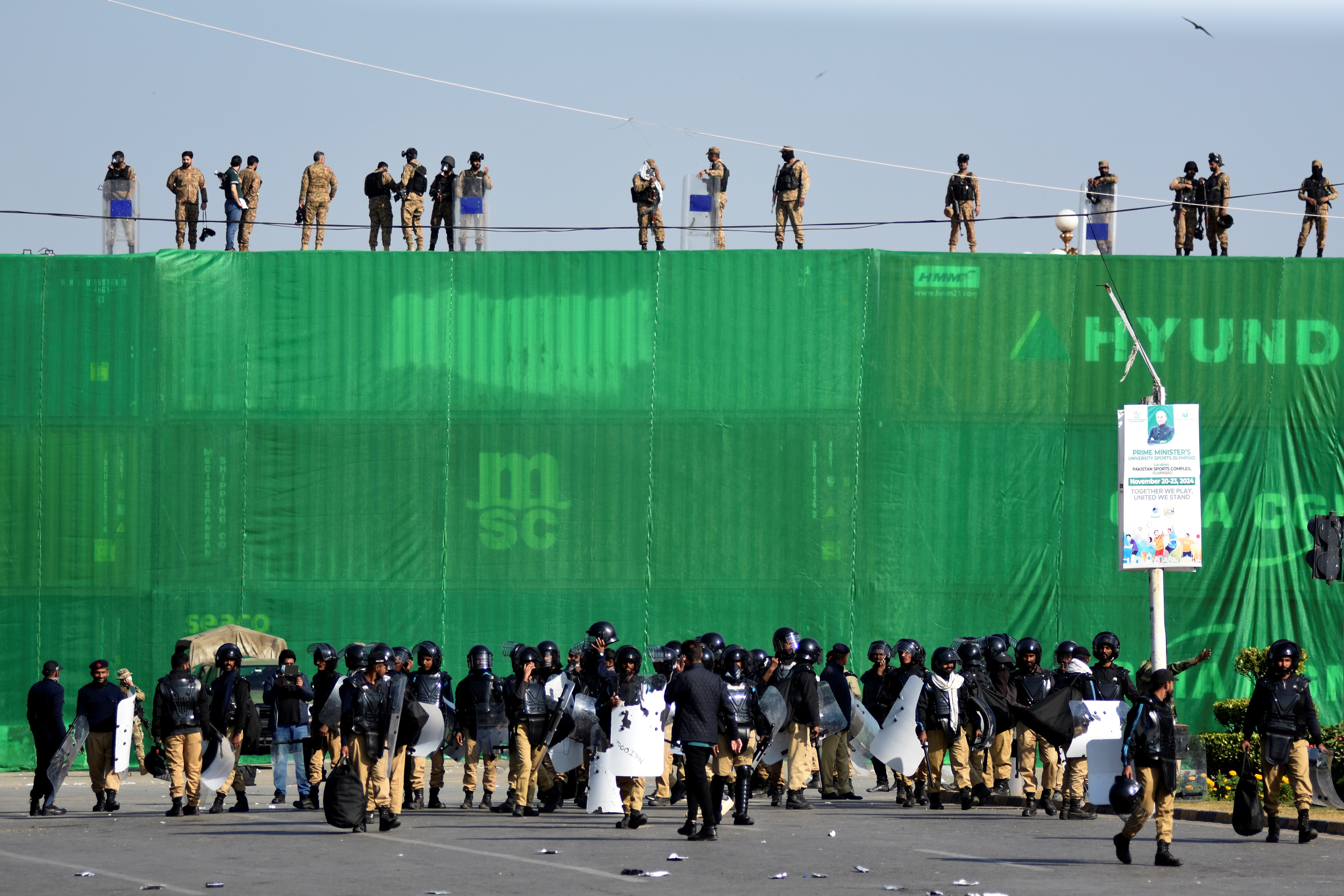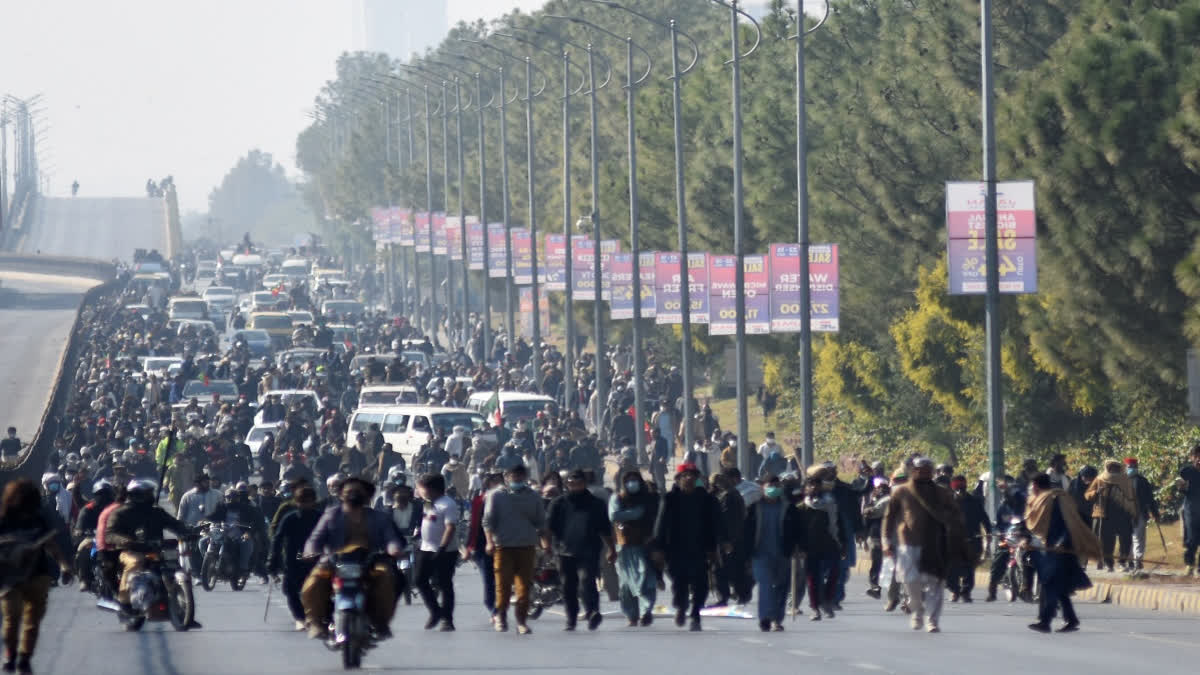On November 14, Pakistan's jailed former premier Imran Khan gave a call for his supporters to convene in Islamabad on the 24th of the month to protest against the 'stolen mandate, unjust arrests and the passing of a controversial constitutional amendment' which gave the state control over the appointment of judges in superior courts, thereby influencing decision making.
The protest was basically to force the government to release him on his terms. On his call, convoys from all parts of Pakistan began converging onto Islamabad, one even jointly led by his wife. To build pressure on the government, the convoys moved at a leisurely pace, overcoming each hurdle placed before them. The police deployed were forced to pull back.
The state, backed by the army, made all attempts to stall the protests, including by installing containers, declaring protests illegal and employing para-military forces. Many PTI workers were arrested, media coverage was restricted and internet and social media were blocked.

The government appeared to be isolating Islamabad from the rest of the country, hoping to stem the protests. Amid rising economic losses, the nation’s attention shifted to Islamabad, ignoring rising casualties in sectarian violence in Kurram in Khyber Pakhtunkhwa.
The protestors started assembling in D Chowk, an area in Islamabad’s Red Zone, which houses government institutions such as the presidency, prime minister’s office, national assembly, supreme court, and the diplomatic enclave. They were asked to remain in the region till their demands were met.
What followed as a four-day lockdown that ended on Wednesday (Nov. 28) after Imran Khan's party suspended its protest following a midnight crackdown by the authorities that reportedly killed four people and injured over 50 others.

Protests of this nature do not occur with just a call, as Imran had done. Such calls are effective for immediate violence. Protests, especially when convoys transporting thousands over great distances, need organization, coordination as also immense logistic backup. The protestors have to be housed (considering the weather), fed and paid for their efforts in some form. Those participating may be die-hard Imran followers but they were also aware that the state response could result in arrests, loss of lives as also no income during the period of protests.
Thus, they need more than just motivation. India witnessed the same during the farmers' agitation of 2020, where funds flowed largely from anti-India organisations based in North America.
Neither Imran Khan nor members of his party would invest their own funds in organising these protests as chances of success are always questionable. Further, direct involvement and subsequent failure could signal an end to their political career. The call may have been given by Imran now but the planning would have been underway well before.
The question remains as to where these funds are flowing from. Imran Khan had posted on X, ‘My thanks go to overseas Pakistanis around the globe, who are not only mobilising Pakistanis and contributing funds but also holding historic protests in their respective countries.’ It is evident that funding must emerge from a source which would gain when anarchy reigns in Pakistan, as also would benefit if Imran becomes the head of state. The sponsors would remain in the background hoping to reap benefits at a later stage.
India is the nation the Pakistan leadership would first blame. The fact remains that deterioration in Indo-Pak ties increased during Imran’s tenure. It was Imran who withdrew High Commissioners and placed unacceptable conditions such as reinstating Article 370 for the resumption of dialogue. Hence India has no love for Imran. Further, for India, anarchy in Pakistan does not bode well.
Nor would China or nations in West Asia desire Pakistan continues in turmoil. Instability in Pakistan adds to threats to the CPEC (China-Pakistan Economic Corridor), funded largely by China. Involvement of state machinery in containing protest opens doors for more attacks on Chinese citizens employed in various projects. However, there are vested interests working to ensure failure of the CPEC or embarrassing China by forcing it to pull out from Pakistan.

The only institution which would benefit from turmoil in Pakistan, degrading China, as also creating an insecure South Asia would be the US-based deep state. The deep state, despite multiple attempts, has failed to change leadership in India as also raise levels of anarchy in the country. Its attempts have repeatedly been contained by the government. A change in strategy could be to enhance uncertainty in India’s neighbourhood, adding to its security concerns. It could then exploit this to target India.
It has succeeded in its efforts in Bangladesh, overthrown the pro-India Sheikh Hasina regime, imposed a puppet government under Mohammed Yunus, which has failed to exercise control over growing Islamization and targeting of minorities. With turmoil in Bangladesh and its army involved in controlling rising hatred and violence, regions bordering India could now become safe havens for enhancing unrest in India’s North East. With growing poverty within the country, illegal migration into India would increase, changing India’s demography.
A similar scenario is being played out in Pakistan. Rising anarchy pushing the government to employ excessive force could turn the scenario volatile. The army, which is the de-facto ruler, is unlikely to give way to a dominating Imran. An uprising with the army, in favour of Imran and removal of the current regime could throw the country into chaos. This is a possible scenario favouring the deep state. Imran would emerge as head of state with dictatorial powers. However, the transition would be violent throwing Pakistan into an economic abyss.
It is therefore essential that the current spate of protests is contained. If Pakistan is to prevent future protests (this will not be the last), then it must assess where funds for supporting such movements are flowing from. It should grow beyond its India fixation and look at those who would gain with the re-emergence of Imran and a troubled South Asia.
Evidently, there has to be outside funding. India has been able to block efforts of the deep state by stopping flow of hawala funds. Can Pakistan do the same.
(Disclaimer: The opinions expressed in this article are those of the writer. The facts and opinions expressed here do not reflect the views of ETV Bharat)



